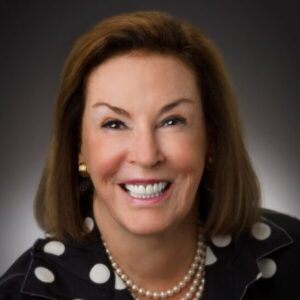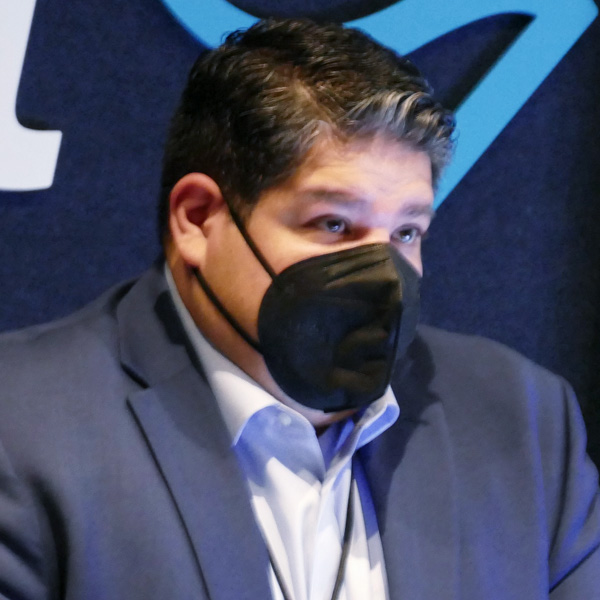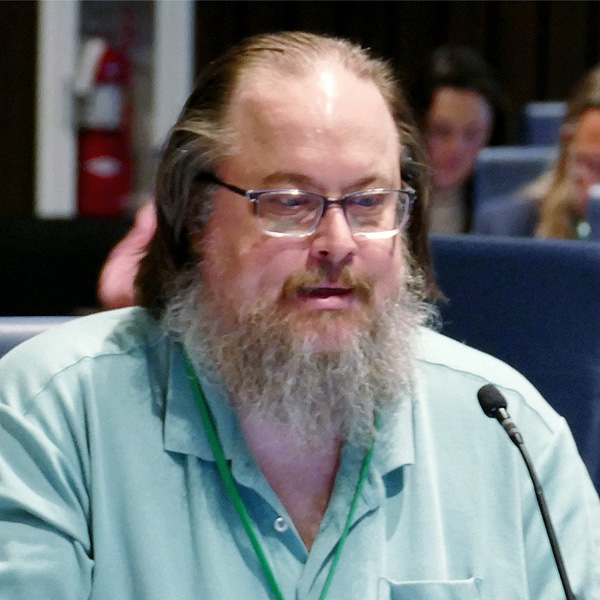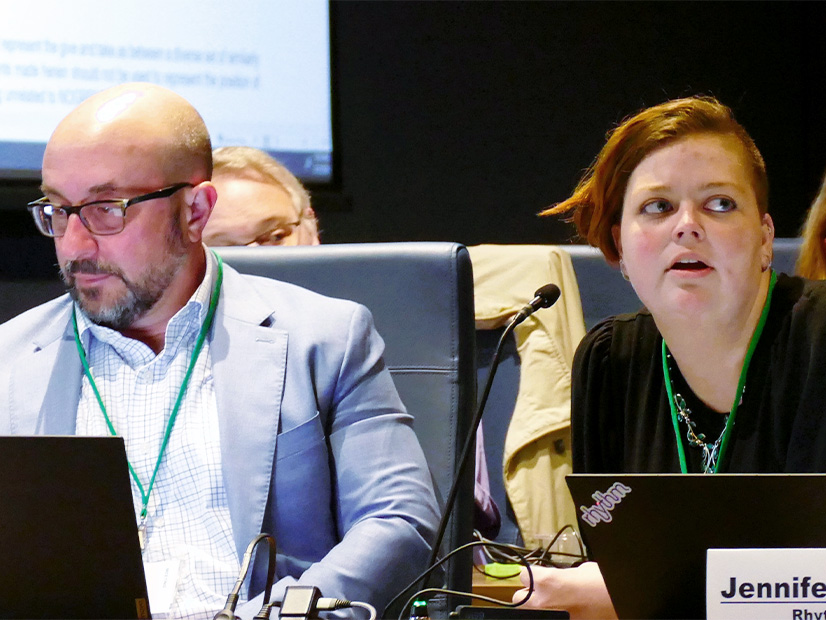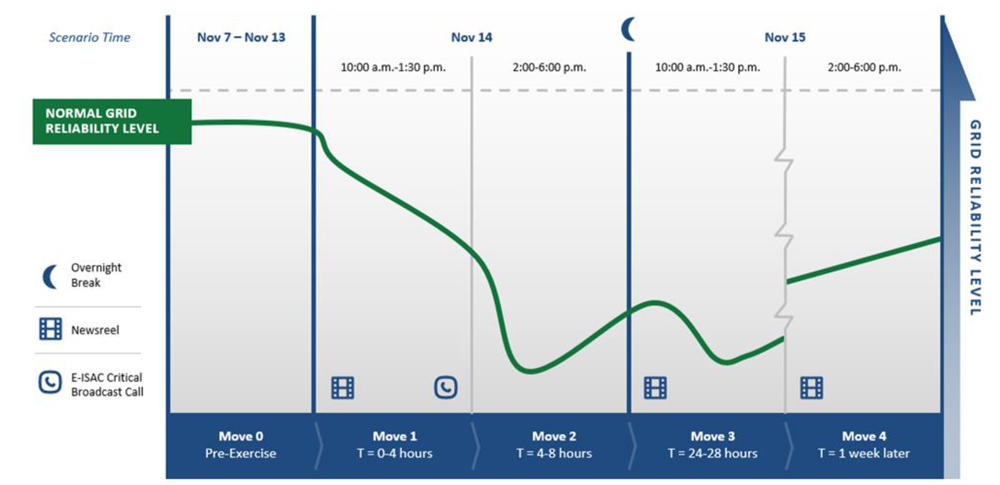The D.C. Council has approved a bill aimed at electrifying 30,000 low-income homes across the district by 2040, but a fight is brewing over funding for the program, which Mayor Muriel Bowser is looking to redirect as part of her efforts to plug holes in her proposed 2025 budget.
Introduced by Councilmember Charles Allen in February 2023, the Healthy Homes and Residential Electrification Act (B25-119) passed its first reading unanimously during the council’s April 2 meeting. A second reading and final passage could occur at the council’s next regular meeting May 7.
The bill would establish a “Breathe Easy” program combining district and federal funding to cover all costs for home electrification retrofits for low-income homeowners and for apartment dwellers in buildings with a majority of low-income residents. Partial payments for retrofits also could be provided for moderate-income homeowners on an income-based sliding scale.
The bill defines home electrification retrofits as “replacement of all appliances or other systems, such as oven, water heater or heating system, that combust fossil fuels on site with appliances and other systems that perform the same function and that are powered exclusively by electricity.”
Funding for programs to train local contractors in installing and maintaining electric appliances and systems also is included in the bill.
Allen’s original bill set ambitious targets for the program, calling for 5,000 retrofits by the end of 2025, 10,000 by the end of 2030 and 20,000 by the end of 2035.
However, at a March hearing, the council’s Committee on Transportation and the Environment amended the bill to allow a more gradual ramp-up of the program. The revised goals are to complete 2,500 retrofits by the end of 2027, 10,000 by 2032, 20,000 by 2037 and 30,000 by 2040.
The committee also stripped the original bill’s provision adding a surcharge to permits for the installation of appliances and systems that burn fossil fuels in both new construction and renovations.
The council previously authorized full funding for the program last year ― an estimated $25 million ― from the city’s Sustainable Energy Trust Fund (SETF), which is funded from fees residents pay on monthly electric and gas bills.
But that funding could be slashed according to the proposed 2025 budget Bowser presented to the council April 3. The district is facing a $700 million deficit in 2025 because of a combination of rising costs, slow post-pandemic revenue growth and the expiration of one-time federal funds received from the American Rescue Plan, Bowser said.
By 2028, the gap could grow to an estimated $1.2 billion, according to city estimates.
The mayor’s presentation for the council did not mention the Healthy Homes Act or Breathe Easy, but called for $1 billion in program reductions, on top of $493 million in “efficiencies and reductions.”
In a letter to the council, Bowser also said she would “resist starting new programs that would only add to our longer-term financial pressures.”
Council staff and clean energy advocates still are combing through the budget’s details, but based on their initial analyses, the mayor intends to use $17.3 million from the SETF to pay utility bills for government facilities, rather than the low-income bill assistance, clean energy and energy efficiency programs it was created to fund.
Questioned by Allen on April 3, Jenny Reed, director of the Office of Budget and Performance Management, said the need to shift the funds from the SETF was due to D.C.’s own renewable portfolio standard, which requires the district’s utilities to provide 100% clean power by 2032. The district also is working toward a 60% cut in greenhouse gas emissions by 2030 and net-zero by 2040.
The problem, Reed said, is that the city’s energy demands are decreasing, while its energy bills are increasing as utilities buy renewable power and renewable energy credits to meet mandated levels of clean power.
To balance the budget, “we looked at areas where programs had not yet started, and where there may be federal funding to offset some of those costs that we were now going to use for other purposes,” she said.
Getting Creative
Breathe Easy fits that description all too well.
The district’s Department of Energy and Environment (DOEE) is set to receive $59.4 million from the Inflation Reduction Act to be used for consumer rebates for “whole home” energy upgrades or for individual new electric appliances, such as heat pumps or electric stoves.
The IRA provides $8.5 billion for home energy upgrades and rebates, with rebate programs being administered by state energy departments and the funding split just about evenly between rebates for whole-home and individual appliance upgrades.
The rebates were supposed to be available as of Jan. 1, 2023, but the U.S. Department of Energy did not release guidelines for states to apply for the funds until July, and DOEE just now is completing its first applications. (See DOE Opens Applications for $8.5B in IRA Home Efficiency Funds.)
Getting the money is a two-step process, according to Nick Burger, deputy director of DOEE’s Energy Administration.
“We submit an application to the Department of Energy. They do some initial review,” he said. “They tell us to proceed, and then we have to submit sort of a supplement called the implementation blueprint. That’s got a bit more detail on our program design, and once that piece is approved, then they release the money to us.”
DOEE is “very close” to submitting its first application, and Burger is hopeful to get it through the Energy Department process by fall, with at least some IRA dollars “flowing to residents … sometime by the end of 2024.”
But both Burger and Allen said the SETF funds for Breathe Easy are a critical catalyst to maximize the impact of the federal dollars.
If Breathe Easy is defunded, “the federal infrastructure funding we’re pairing with this local funding will become next to useless,” Allen said at the April 2 council meeting. “There is a cap on how much you can spend on gas-to-electric home renovation under it, and it’s about half of what the actual renovations cost.
“If [the mayor’s] budget were allowed to pass, it means that we’re not only going to harm lower-income households in our city, but we’re also just going to walk away from federal money on the table. It would be a wasted opportunity,” he said.
Burger agreed, noting the IRA sets a $14,000 cap for the total rebates a household can receive for appliance upgrades and pays up to 80% of the costs for whole-home efficiency upgrades. “That’s where D.C. money can be used to unlock federal funding … to cover the full cost for income-qualified households,” he said.
Allen has estimated a full-home electrification, including heat pumps and other appliances, can run up to $30,000 or more per home.
D.C. already has ambitious clean energy programs, such as its Solar for All initiative, which has a mandate to install rooftop and community solar projects across the city, with the goal of halving utility bills for 100,000 of the district’s low-income residents by 2032.
To prepare for the federal funds and Breathe Easy, the council last year appropriated $2 million for DOEE to run a pilot program using Solar for All and other existing energy-efficiency programs to install solar and electric appliances in low-income homes. Burger said 48 homes have been upgraded, primarily in two of the district’s African American neighborhoods, River Terrace and Deanwood.
DOEE also is sponsoring a Healthy Homes Fair on April 6, to “help equip D.C. residents with the knowledge they need” to plan home efficiency and electrification upgrades, Burger said. “While we would be thrilled to be able to show up … with rebates in hand, we also know that residents are planning their electrification journey,” he said, and the fair is aimed at informing them about the available technologies and, eventually, the federal funding opportunities.
Still, without more local funding, the challenge for DOEE will be “how do we get these benefits, the federal rebates, most effectively, most easily into the hands of low-income households,” which may include both single-family homes and multiunit buildings, he said. The IRA provisions for multiunit buildings are more flexible and could be used to cover the full costs of unit upgrades; so, DOEE may prioritize channeling funding toward such buildings, he said.
But Burger noted that the council and mayor will be negotiating the budget over the coming weeks, so DOEE will not know what its final budget will be until then. If the Breathe Easy funds are cut, DOEE will start exploring how it can stretch the federal funds, especially for the individual appliance rebates.
“That’s where we’re going to have to kind of continue to look and get creative,” he said.
